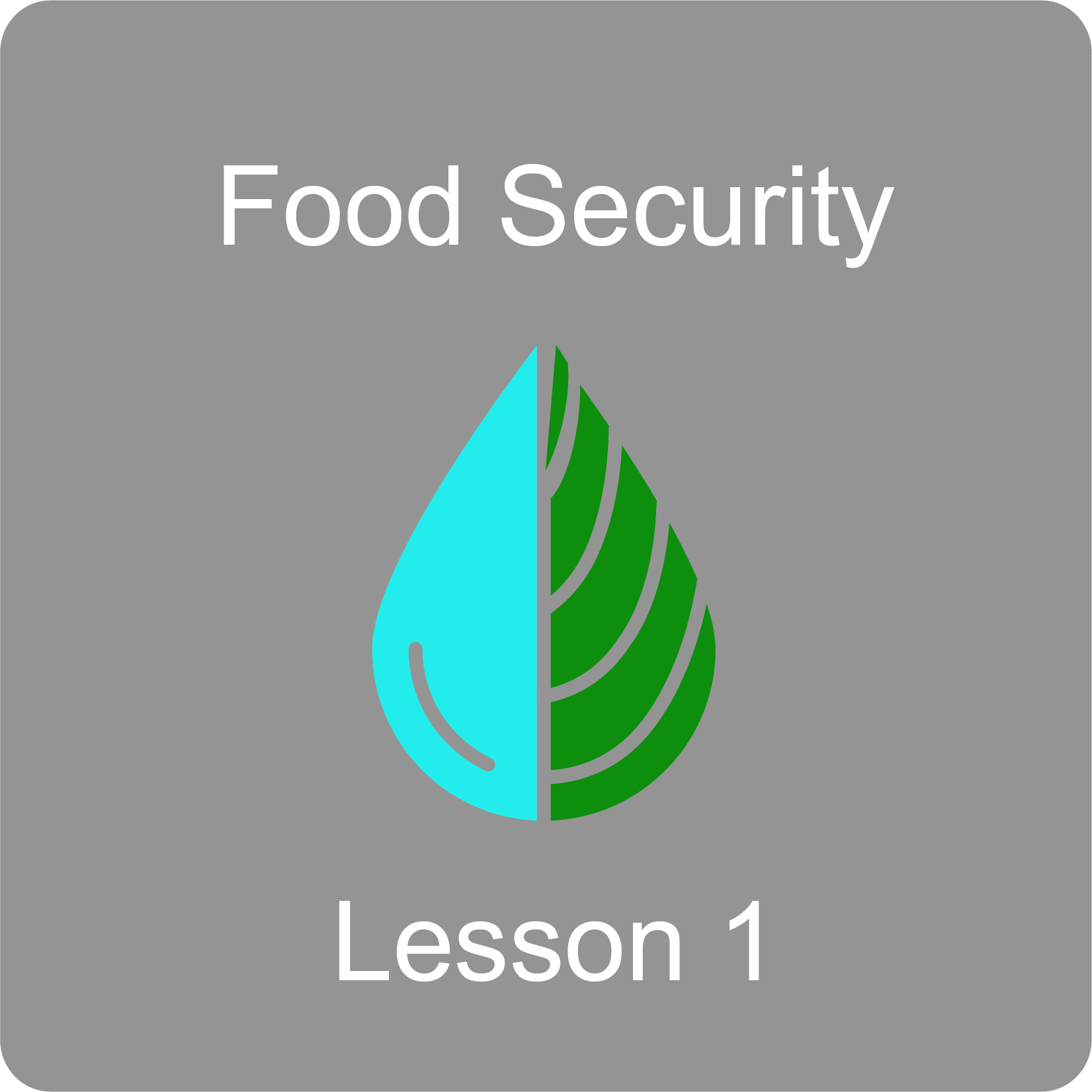Lesson FS1: Introduction to Food Security
 Description: Food security is a foreign concept to many Americans. Most believe that chronic hunger and malnutrition happens only to people in developing nations or to the homeless. In reality, 1 in 6 people in America go hungry every day and are not food secure. Throughout the lesson, students will develop and refine their understanding of food security and they are able to compare different countries and analyze what food security issues they have based on the three pillars using global statistics.
Description: Food security is a foreign concept to many Americans. Most believe that chronic hunger and malnutrition happens only to people in developing nations or to the homeless. In reality, 1 in 6 people in America go hungry every day and are not food secure. Throughout the lesson, students will develop and refine their understanding of food security and they are able to compare different countries and analyze what food security issues they have based on the three pillars using global statistics.
Objectives
What Students Learn:
- Food security is defined by 3 pillars, and it is influenced by many factors including poverty, geography, society, climate, and politics.
- 11% of all people worldwide go hungry each day.
- This is a complex, global problem that needs to be addressed in their lifetime.
What Students Do:
- Students create their own definition of food security using knowledge from class discussions.
- They apply statistics to compare and contrast food security in countries around the world and collaborate with team members to investigate one country with food insecurity.
Instructions
THE BIGGER PICTURE
Food security is a foreign concept to many Americans. Most believe that chronic hunger and malnutrition happens only to people in developing nations or to the homeless. In reality, 1 in 6 people in America go hungry every day and are not food secure. To some students, food insecurity is a reality, therefore this is a subject that must be approached with great sensitivity and care. Throughout the lesson, students will develop and refine their understanding of food security using online resources, videos and class discussion to help guide their thinking. This concept is the introduction to the unit and will be addressed in future lessons associated with the unit, so it is important that the students get a solid understanding of the concept. They are able to compare different countries and analyze what food security issues they have based on the three pillars using global statistics. The lesson ends by introducing students to the UN council meeting that will take place at the end of this unit, and answering questions to prepare for it in the Building Your Case worksheet.
FOR EDUCATORS
Please use this Complete Food Security (FS) Module link to access the most up-to-date version of our Food Security Curriculum Module (last updated 02/23/2021) which is currently being field-tested. All student and teacher worksheets and handouts are attached as additional pages to the end of each corresponding lesson. If you would like to field test these lessons, please email us at see@isbscience.org.
Assessments
Begin this module (Lessons 1-7) by administering this FS Pre/post-assessment (Google Doc | Word Doc) to all students. Assign each student an ID number that they will place at the top of this document as well as the post-assessment at the end of the module. Pre- and post-assessments can be compared using ID numbers (so as not to identify specific students) and allow Systems Education Experiences to show impact of this module on student growth. Please consider sending electronic versions of all pre- and post-assessments, as well as any other student work, to see@isbscience.org.
Resources
For your convenience, the following are quick links to resources required for Lesson FS1 (beginning on page 4 of this main PDF).
- Food Security Vocabulary PowerPoint (Google Slides | PowerPoint)
- 3 Pillars PowerPoint
- Building your case – students (Google Doc | Word Doc) – attached at the end of the lesson
- FAO’s World Hunger Map: http://ref.data.fao.org/dataset?entryId=a66c7b52-c57d-4407-8dee-6707e7967e42
- UN World Hunger Map: http://www.wfp.org/content/hunger-map-2015
- Source of Statistics: UN’s World Food Program (http://www.wfp.org/)
- Figure 1: UN Department of Economic and Social Affairs (https://esa.un.org/unpd/wpp/Graphs/Probabilistic/POP/TOT/)
- Reliable websites students can use to research their country information:
- https://www.cia.gov/library/publications/the-world-factbook/
- http://data.worldbank.org/country
- http://data.un.org/CountryProfile.aspx
- http://wits.worldbank.org/CountrySnapshot/en/NAM/textview
- http://www.fao.org/faostat/en/#country/93
- http://www.fao.org/faostat/en/#country/116
- http://www.fao.org/faostat/en/#country/147

